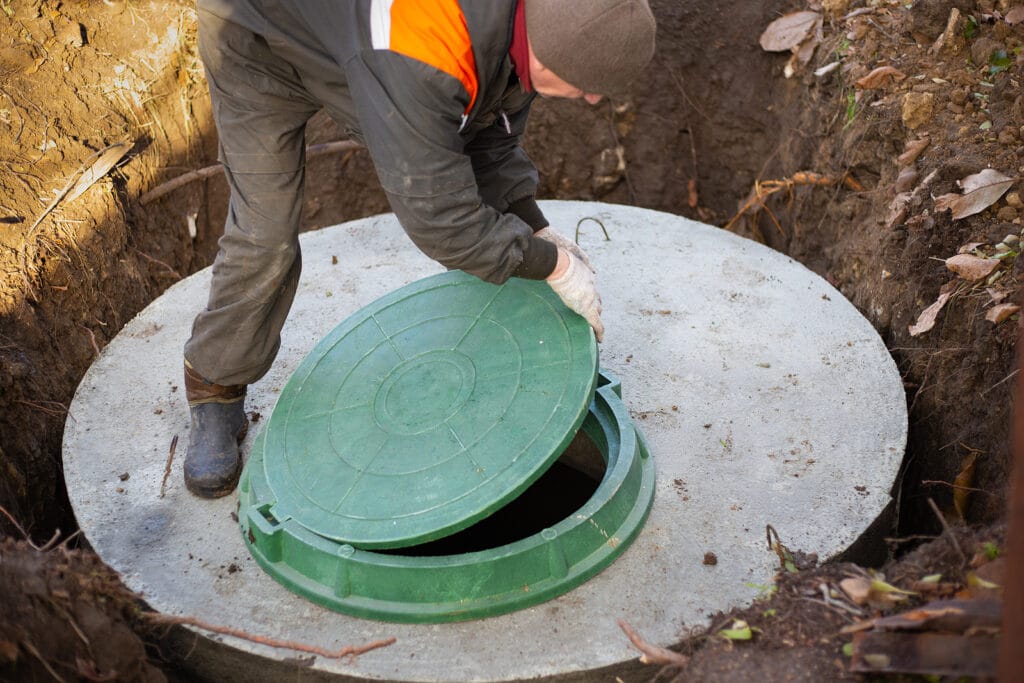Certain aspects of home ownership are often hidden until there is a problem. Septic systems are among the most important, yet often ignored components of a home. We take it for granted as it is assumed to do its job with no maintenance or concern. Like every system that has a life expectancy and will eventually need to be replaced.

The expense of replacing the septic tank is an enormous financial burden for homeowners who don’t have the right plan. It is crucial to understand the various factors that influence the price of a sewer tank.
Understanding the true septic system cost to replace a tank involves considering various factors beyond the obvious price amount. The tank that was previously used must be taken away and a new one put in place. The cost will be affected by numerous services and parts. Costs are incurred at every stage of the process such as obtaining permits, hiring experts, and even excavation and installation.
The cost of replacing the septic system, which comprises installation costs for the leach field as well as it’s septic system in general is a significant factor. The price of a new tank can vary significantly depending on the size and materials of the tank as well as the complexity of installation. Additionally, the location of your property, the local regulations, and the soil condition can also impact the cost. Get in touch with experts on septic systems to assess your needs and get an exact estimation. The experts will analyze elements like the size or shape of the leach fields in order to provide an accurate estimate of your total costs of your septic system.
Apart from the tank, another substantial expense is the leach field, also known as a drainfield. This component is essential for the treatment of wastewater and distribution. Replacing a damaged or failing leach field needs careful planning and can significantly impact the total cost of replacing septic. Factors such as the size of the field, soil composition, and accessibility all impact the expense, making it crucial to take these aspects into consideration when making a calculation of the total cost.
Alongside the physical expenses homeowners must also be aware of the intangible expenses associated when replacing a septic tank. This process may disrupt your daily routine by requiring you to leave temporarily your home, or restrict your use of water while the installation is being done. The inconveniences you face should be considered into your plan, since they could affect your routine, and possibly result in additional costs, including accommodation costs, or adjustments to your routine.
It is also crucial to recognize the need for proper maintenance and care of septic systems is necessary to extend their lifespan and reduce the risk of premature replacement. Neglecting maintenance tasks may result in more severe problems later on, such as damage to the drainfield, or failure of the tank. Incorporating septic system maintenance costs in your budget is an intelligent investment that will save you more money in the future.
By now, you may have realized that determining the septic system cost is not a straightforward task. The cost of replacing your septic tank will be determined by a range of elements. This includes the dimensions, materials and the complexity of installation as well as the condition of your leach field. Your location as well as local laws will also have an impact on the total cost. In order to accurately estimate the expense, it’s important to consult with professionals experienced in the replacement of septic systems.
If you’re looking to replace your septic system, you may be shocked to discover that there are hidden expenses that you may not have anticipated. The costs can quickly add to a large amount, so be aware before making any decisions.
The hidden costs of replacing the septic tank include:
The cost of inspections and permits. Before beginning work on the replacement of your Septic tank, it is important to require a permit from your local authority. These permits are expensive and you might have to cover inspection costs.
The expense of excavation and removal. Before the new system can be install, it will be required to take down and excavate the old system. This is a cost-effective process, particularly if the older system is situated in an unaccessible area.
The cost for backfilling and gradeing. The hole left after removing the old system is going to need to backfilled and graded. It is essential that the new drainage system is able to drain properly.
Costs for landscaping. When the new system has been put in place, you may need to complete some landscaping work to ensure it looks clean and neat. It can be expensive, especially if a landscaper is needed.
It is important to consider the hidden costs when planning the replacement of your septic system. By doing so you’ll save yourself from surprises later on.
Eco-friendly septic systems are a great option for homeowners who have an unfinancially tight budget. These eco-friendly septic options aren’t just cost-effective alternatives to conventional systems, but also help to protect the environment through reducing runoff and water pollution. These environmentally friendly solutions are now accessible and affordable. They’re the best option for people looking to minimize their environmental impact without breaking the bank. Although there are some upfront costs to switch to an eco system, the savings in time will more than make up for the initial costs. Going green isn’t just a fashion statement, but a fundamental lifestyle change that everyone should contemplate if they’re really committed to protecting our planet for the generations to follow. You’ll be able to rest in assurance that you’re doing your part in helping the global community. This will also make sure that your home functions efficiently and with fewer maintenance costs, as well as lower costs per month.